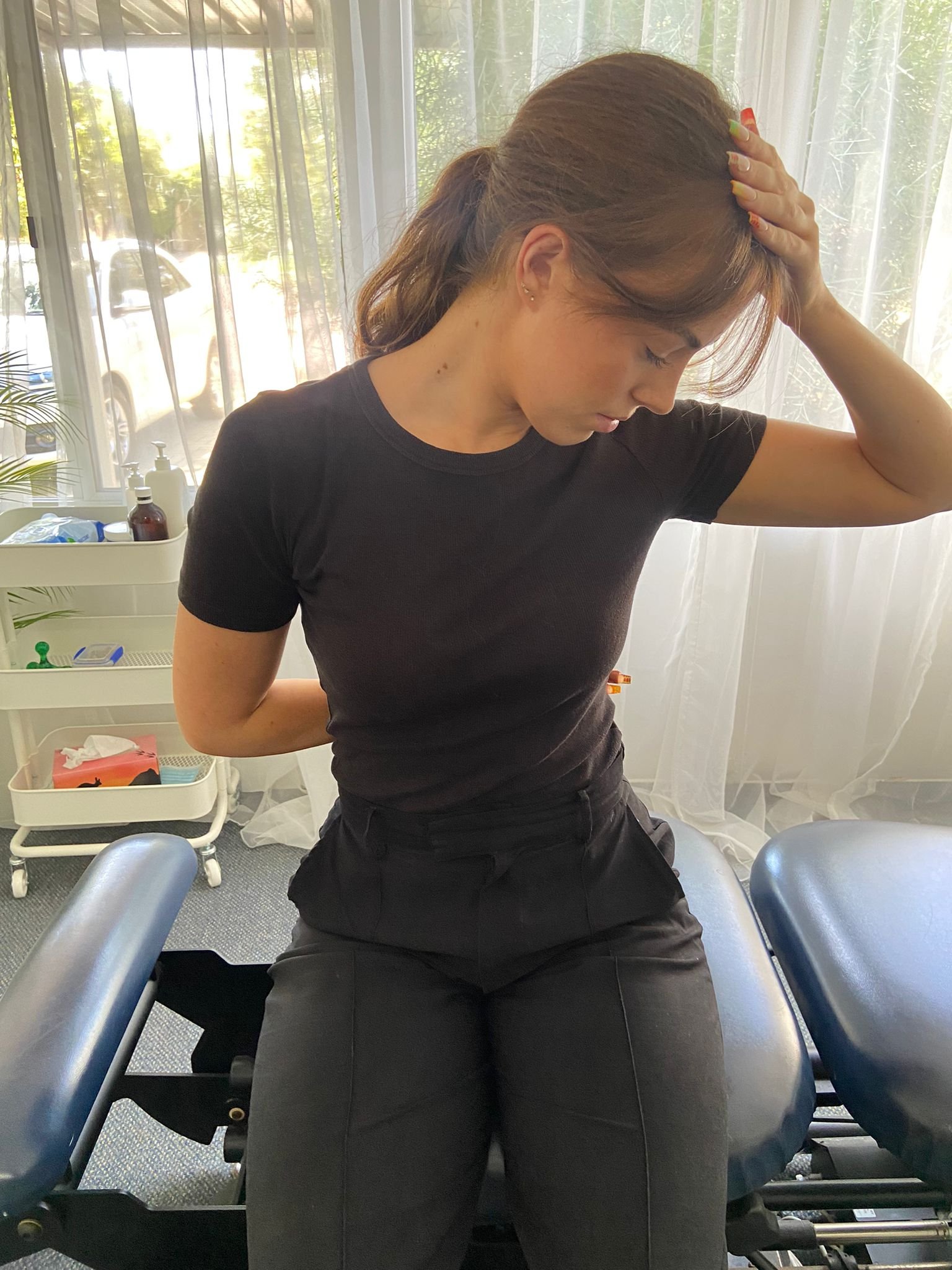What the Posture?
When we think of pain, more specifically the causes of pain, what’s the first things we think of? Car crashes? Sporting injuries? Slips or falls, even broken bones? Posture is such an underrated cause of pain that most people think poor posture is just more of an aesthetic thing.
But what causes poor posture? Why is it so common?
Thinking of society today, we’re so engrossed in all things technology, whether that’s chilling on the couch laughing at the latest episode of MAFS, working at the computer in a mad rush to finish off a project, or trying to clear the latest level of Candy Crush on your phone. When we look down constantly, we’re developing habits that we might not even notice ourselves.
Are your shoulders rounded forward? Head tilted forward? Is your neck always sore? Feels like it just needs to crack? That, my friend, is the result of bad posture. When we develop these bad habits, all the muscles that normally switch on to make sure our shoulders are rounded back and our head held straight, switch off. We lose that survival advantage we developed all those hundreds of thousands of years ago when we evolved from being quadrapeds to being bipeds. So which muscles are involved?
In bad posture, the main muscles that switch off include your deep neck flexors such as your scalenes (which also assist in breathing), and your rhomboids (which help keep your shoulder blades back). Because they’re switched off, the upper traps and pecs tighten up from taking on more strain to compensate.
You may be wondering, “so my muscles aren’t as switched on as they should be. So what?”. The problem here is that your upper traps attach on to your neck. If they’re super tight and aren’t able to function as well as they should, what do you think will happen? The neck takes more strain than it’s able to handle.
And that’s where pain comes in. So, how do we fix it?
First, we have to be conscious of our bad habits. When do we slouch the most? At work? When we crash on the couch after a long day of dealing with problems at the office?
Next, let’s break those habits. I know, I know - easier said than done! But, like we always say at the Centre, if good posture was easy, everyone would have it. So how do we break these habits? Let’s talk through some exercises and strategies to help us through it.
Scapular Setting
Sounds weird, I know, but here we’re pretty much making our body more conscious of how we hold our shoulders. This forms the basis for any type of upper body exercise, so it’s really important to get this exercise into you normal routine!
To do this, raise your shoulders and roll them back and down. Squeeze your shoulder blades together, as if you’re holding a ball between them. Hold for five seconds, five times in a row. Repeat three times a day.
Stretches - Levator Scapulae
Look into your right armpit. With your right hand, gently pull down on your head towards your armpit, helping to stretch out this muscle. Repeat on the other side.
A lot of people with neck pain have it because these muscles are way too overactive, so helping to stretch them can really help with a sore neck, improve posture, and reduce strain on your neck.
Stretches - Upper Trap
Place your left arm behind your back. Bring your right ear to right shoulder, and with your right hand, gently pull your head towards your right shoulder to deepen that stretch. Repeat on the other side.
Stretches - Pecs
Find a corner, or doorway. Making an L-shape with your arm, move towards the doorway and push your shoulder towards the door space. You should feel a really nice stretch through that muscle.
Exercise - Deep Neck Flexor Holds (Chin Tucks)
i. Prop the back of your head up on towels. Perform chin tuck. When doing so, try to keep the more external muscles switched off so you target the deep flexors. Maintain chin tuck as you lift head about 5 cm off the towel.
ii. Keep the chin tucked as you lower head back down and then release chin tuck. Repeat.
iii. Progress to performing from a flat surface or including holds.
At Work
Make sure your monitor is eye level; whether that be raising your computer screen or taping your phone so it’s eye level, or even getting a phone/ipad stand.
Last of all, go easy on yourself! Posture is something we all work on, and it takes time. Take your wins, appreciate your losses, and keep getting regular adjustments. And most importantly, keep asking questions!
We hope you enjoyed our blog about Posture.
Please subscribe to our newsletter below to receive more blogs like this to your inbox. If you or anyone you know suffers from neck pain or poor posture, book an appointment today with Dr Emil or Dr Liam to see the benefits of Chiropractic care!







